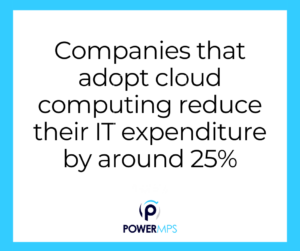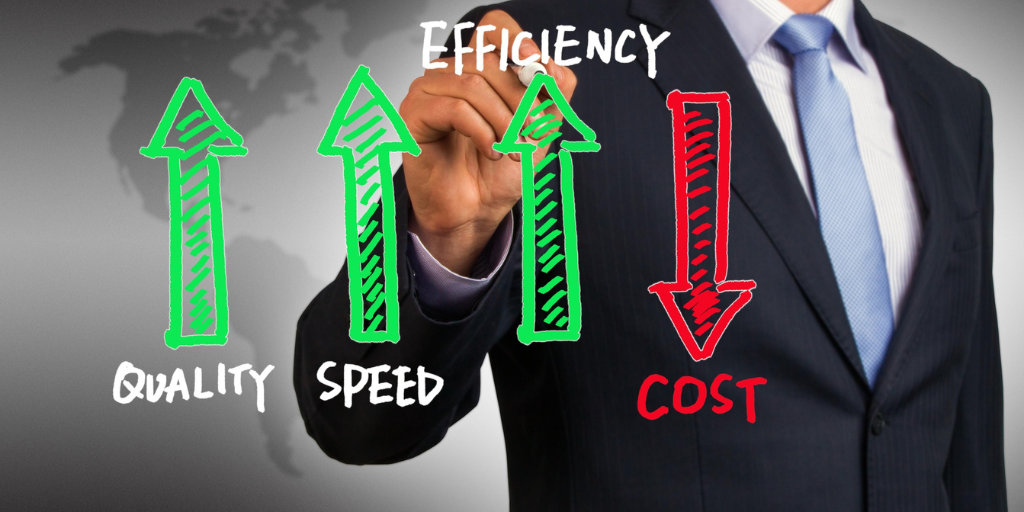Boosting profits is an enduring pursuit of businesses worldwide, spanning industries from retail to tech. Yet, traditional approaches often overemphasize the role of revenue generation, leaving a crucial lever – cost reduction – underexplored and underutilized.
In the tech industry, this untapped cost containment potential is particularly profound. Rapid advancements within technology provide unique opportunities to streamline operations, eliminate waste, and enhance profits swiftly. This post unveils how tech corporations can effectively batten down costs, all while riding the tide of technological innovation, to drive a quick and substantial increase in their profits.
Understanding the Profit Equation
It’s conventional knowledge, as Investopedia explains, that profit equals revenue minus costs. This equation is critical to the anatomy of any business’s financial health.
Typically, profitability enhancement strategies focus on the revenue side – strategies that could range from marketing enhancements to product line expansions and scaling operations. These are certainly viable strategies, but they tend to overlook a more immediate avenue for profit augmentation – cost reduction.
More importantly, cost reduction holds a crucial place in the dynamic world of technology, where the pace of change sets up a unique set of opportunities. McKinsey states that technology companies can improve their EBITDA (Earnings Before Interest, Taxes, Depreciation, and Amortization) margin by 1 to 3% by acting on cost efficiencies. Therefore, tech businesses must pay equal attention to cost management for a steady and rapid increase in profit.
The Power of Technology in Cost Reduction
In its transformative capacity, technology is a potent cost-reduction agent. Accenture’s report reveals that a significant 63% of high-performance businesses stress technology investments to refine their cost structures. Given such emphasis, it is clear that technology harnesses a multitude of avenues to drive down costs.
One such avenue is through automation. By automating repetitive tasks, businesses can minimize workforce costs, expedite processes, and simultaneously enhance customer satisfaction. Increasing automation leads to a dual benefit of reducing expenditure and growing revenues. Furthermore, Gartner foretells that by 2025, robotic process automation (RPA) will have achieved near-universal adoption. This fast-gaining momentum indicates the cost savings potential inherent in automation.
The utilization of software and hardware can also be optimized for further cost-saving. An efficient system reduces downtime and prevents over-provisioning of resources; this balancing act cuts costs and heightens operational efficacy. By embracing technology, businesses can morph their cost structures into leaner, more efficient models.
Making the Move to Cloud
 Moving to cloud computing stands as a powerful tool for tech businesses in their pursuit of cost reduction. TechJury affirms this by noting, “Companies that adopt cloud computing reduce their IT expenditure by around 25%”. The reason for this is the unique advantages offered by the cloud model.
Moving to cloud computing stands as a powerful tool for tech businesses in their pursuit of cost reduction. TechJury affirms this by noting, “Companies that adopt cloud computing reduce their IT expenditure by around 25%”. The reason for this is the unique advantages offered by the cloud model.
Cloud computing lets companies transition away from expensive on-premise hardware and software. This shift reduces investment, maintenance, and upgrade costs, significantly impacting the bottom line. The scalable nature of cloud computing also means businesses only pay for what they need and use, preventing resource wastage. Moreover, according to a report by LogicMonitor, 66% of IT professionals state that security is their primary concern when adopting an enterprise cloud computing strategy. It’s essential, therefore, that companies not only manage costs but also pay heed to secure their data while migrating to the cloud to ensure balanced and long-term success.
Navigating the Balance for Success
In wrapping up, the intricate balance between cost reduction and strategic investment emerges as a centerpiece for successful profit maximization, particularly within the tech sector. Trimming costs must not come at the sacrifice of quality and value delivered to customers. It’s, therefore, essential to conduct cost reduction initiatives strategically to avoid potential pitfalls.
The continuous march of technological progress is revolutionizing the discourse on cost management. A forward-looking approach embracing these advancements is vital for businesses aiming to amplify their profit margins swiftly. Farsighted investment in technologies now can unfurl significant cost reductions tomorrow, creating a more efficient, lean, and ultimately profitable enterprise.
The numbers, such as the impressive adoption rates of cloud computing and automation, underscore the impact of technology on cost reduction. Thus, keeping a pulse on emerging technologies, understanding their implications, and deploying them strategically is the fundamental equation for maximizing profitability in the tech industry. Harnessing technology’s cost-cutting power can pave the way for a more profitable tomorrow.







